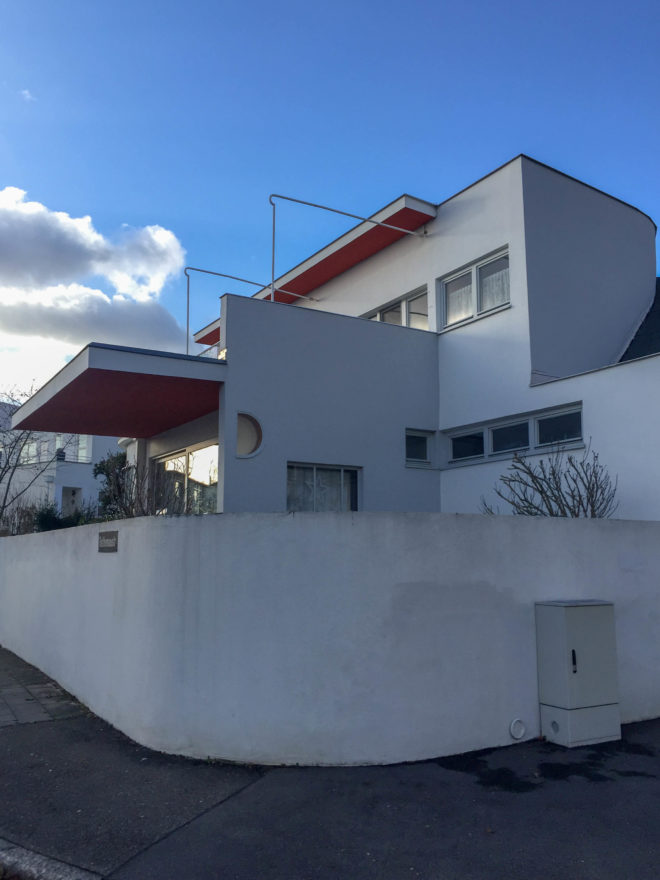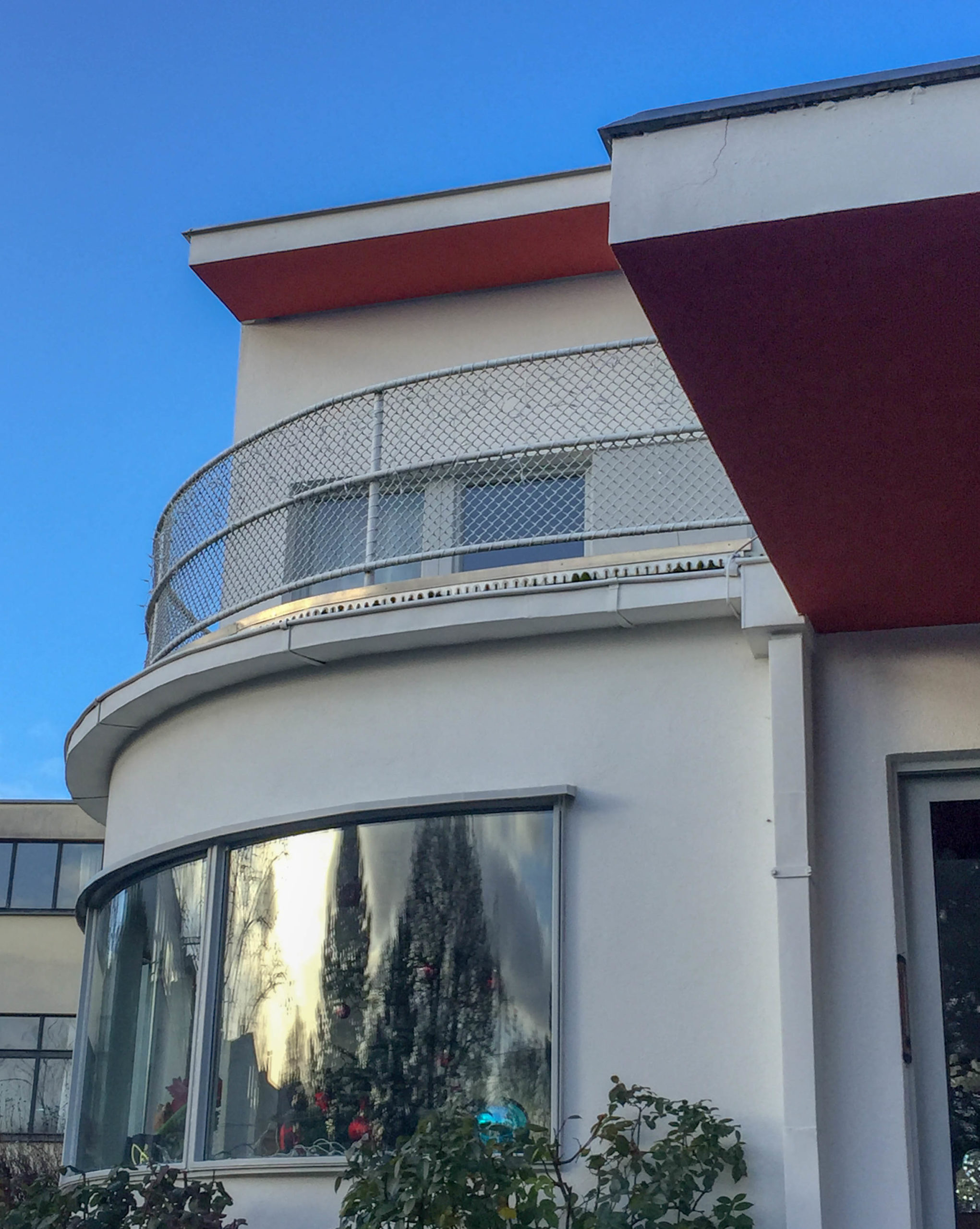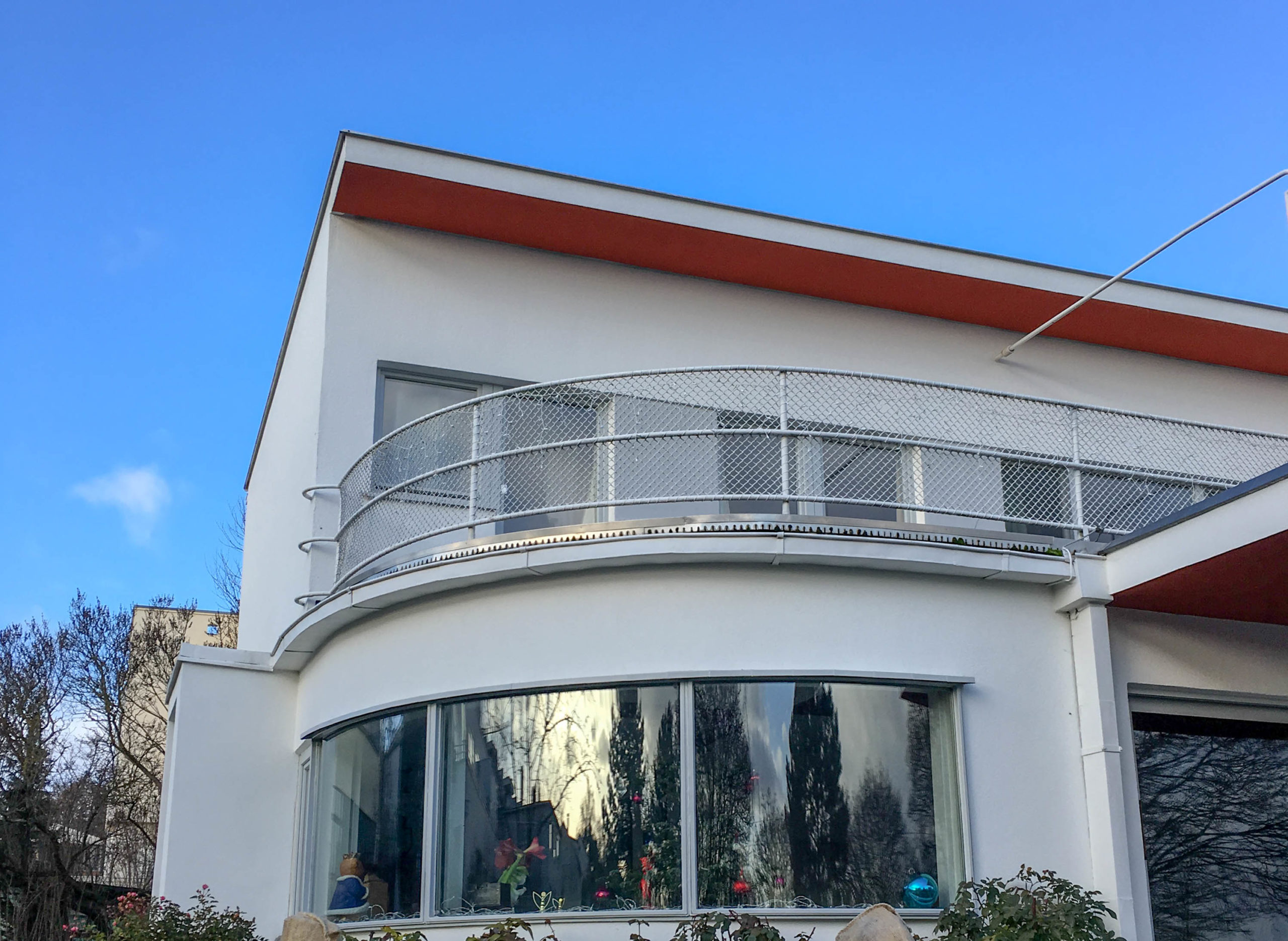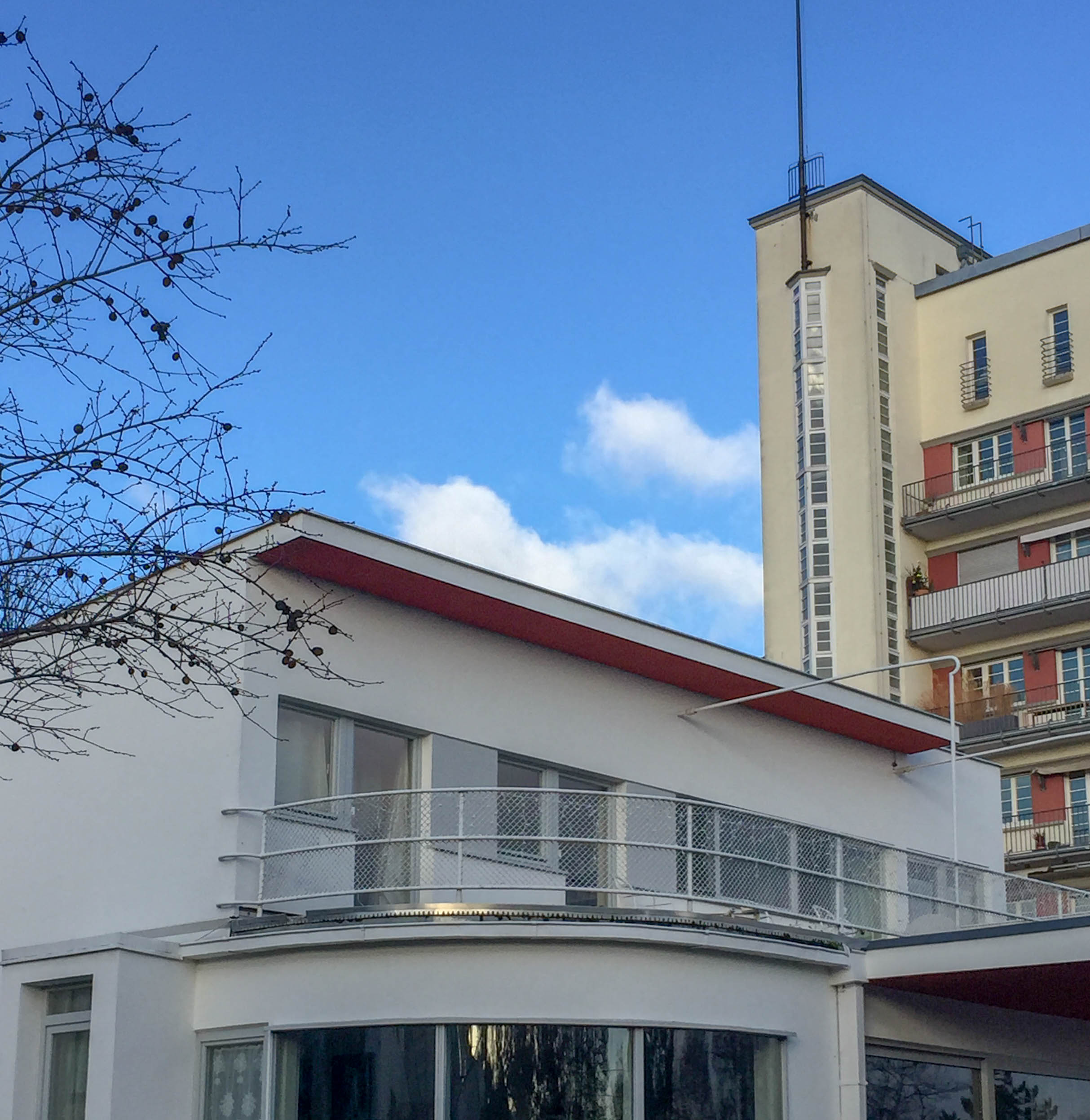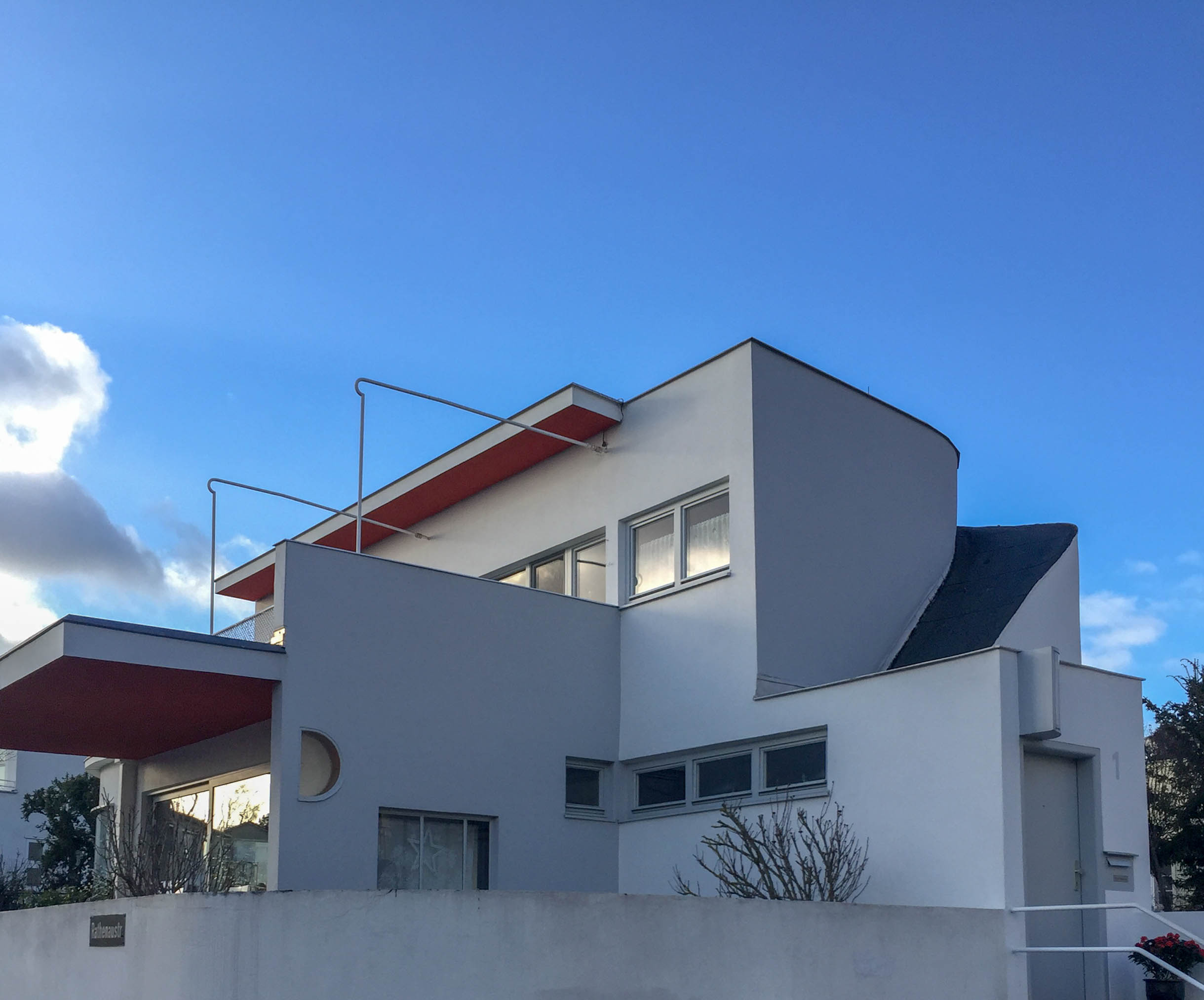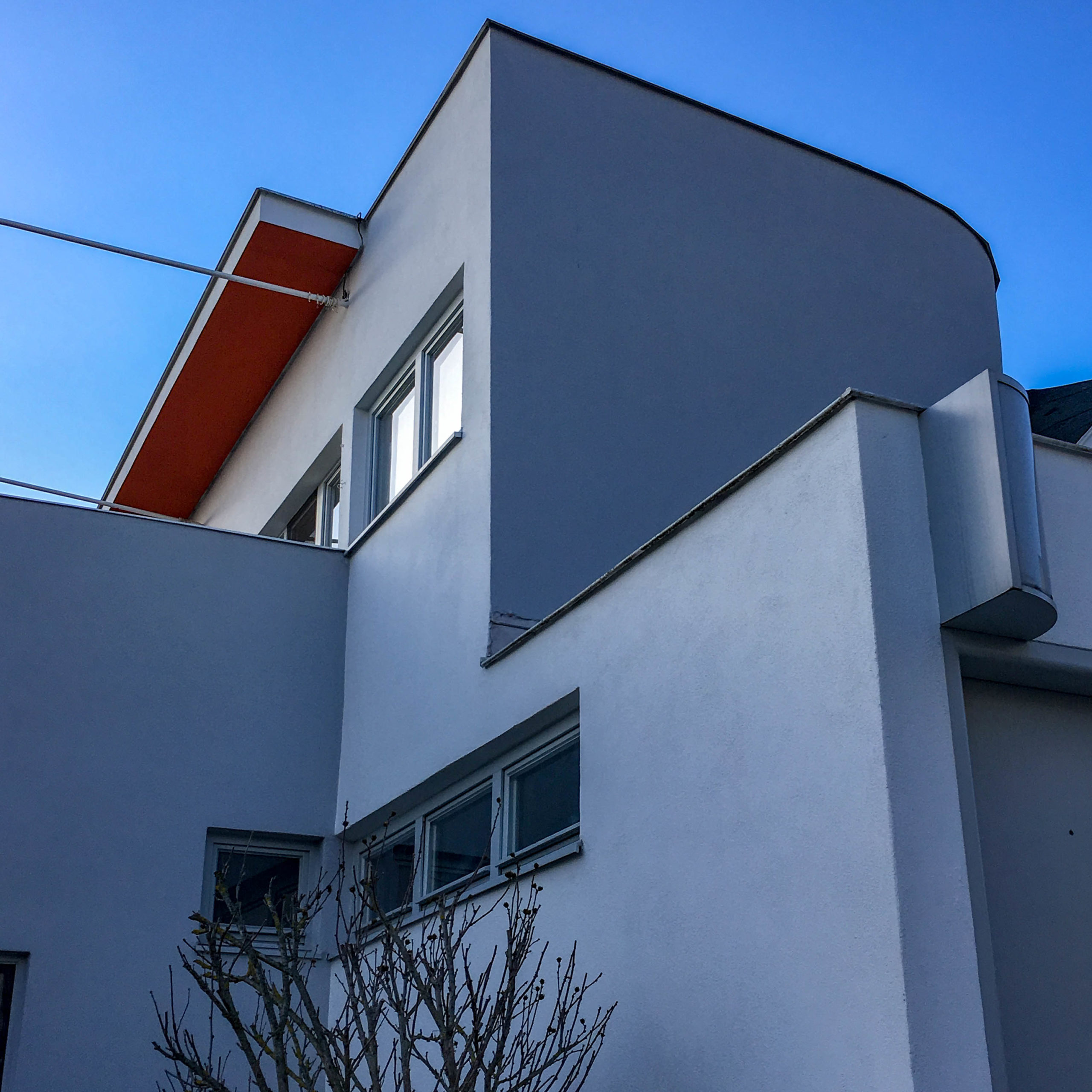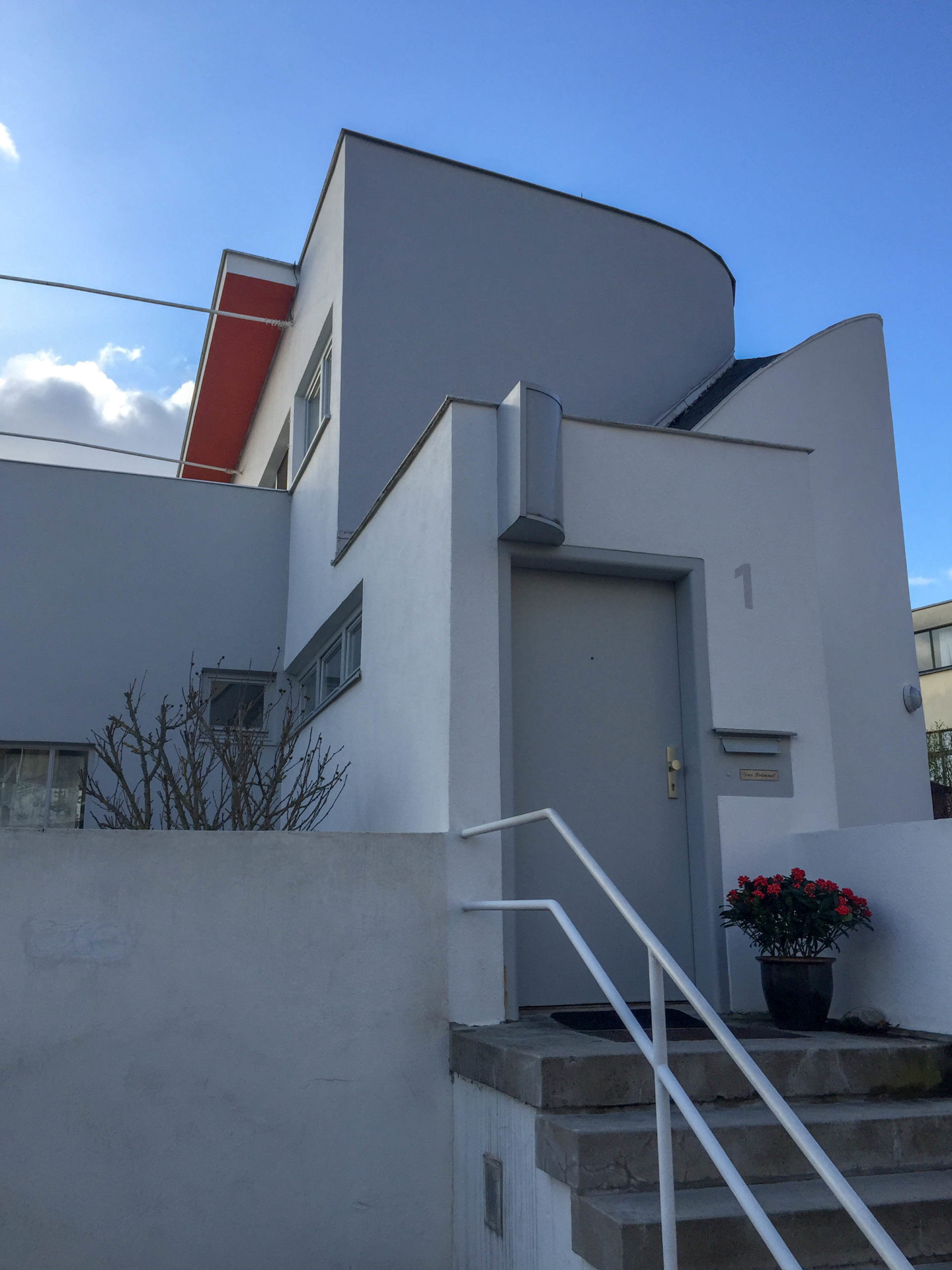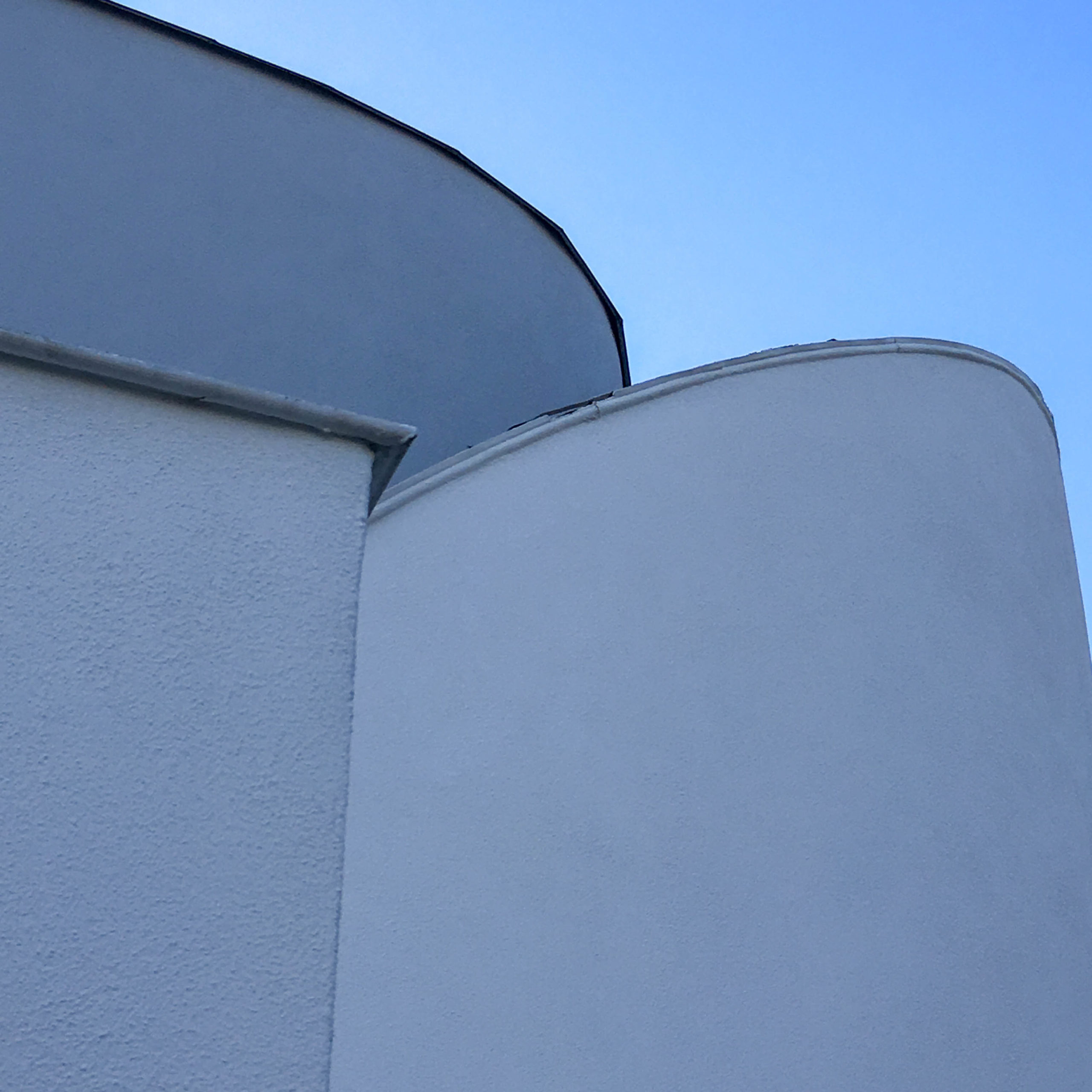1927
Architect: Hans Scharoun
Hölzelweg 1, Stuttgart, Germany
Weissenhof Estate
The Weissenhof Estate was built in 1927 as part of the building exhibition “Die Wohnung”, organized by the Deutscher Werkbund and financed by the city of Stuttgart.
During the exhibition, the 33 realized houses could be viewed from the outside and inside. Afterwards, they were rented out by the city.
Model Houses
Seventeen international architects under the artistic direction of Ludwig Mies van der Rohe, presented their innovative designs for modern, healthy, affordable and functional living.
In addition to the model houses in the Weissenhof Estate, there were three other exhibitions on modern building worldwide, interior design and new building materials and constructions.
Within just four months, 500,000 visitors came to see the exhibition, which had a worldwide resonance.
Avantgarde
The Weissenhof Estate showed the then current development of architecture and housing.
A formal coherence was achieved through the avant-garde architectural views of the contributing architects and the specification of flat roofs.
Scharoun House
Hans Scharoun‘s sculpturally modeled single-family house with 107 square meters of living space forms the eastern end of the Weissenhofsiedlung.
The exterior form of the house appears freely dissolved and asymmetrical.
Individual rooms stand out as geometric bodies and make the movement sequences inside visible.
The single-flight staircase, which connects the first floor and the upper floor, appears on the outside as a curved element of the facade.
The staircase made of iron sheets, as used in shipbuilding, and the terrace window in the form of a porthole show Schampun’s enthusiasm for the aesthetics of naval architecture.
To the north and south, the two-story dwelling closes with a rounded facade.
The steel skeleton structure is lined with thermal insulation boards and plastered on the outside with pumice boards. Inside, it is clad with gypsum boards.
Interiors
The house is developed from the inside out and refers to the surrounding environment.
Its design is based on the living functions, which are marked by built-in furniture.
Scharoun used geometric color surfaces and spatial axes to relate the interior and exterior spaces.
The red ceiling surface summarizes the dining area in the living room and the seating area on the terrace.
Heating and coal room, laundry room and storeroom are located in the basement.
On the first floor are entrance, checkroom, wc, living room, dining room, work room, terrace, kitchen and a utility room and bedroom.
Upstairs there are three bedrooms, as well as the bathroom and another terrace.
Renovation
As the first building in the Weissenhofsiedlung, the Scharoun House was refurbished between 1979 and 1981 in accordance with the preservation order.

